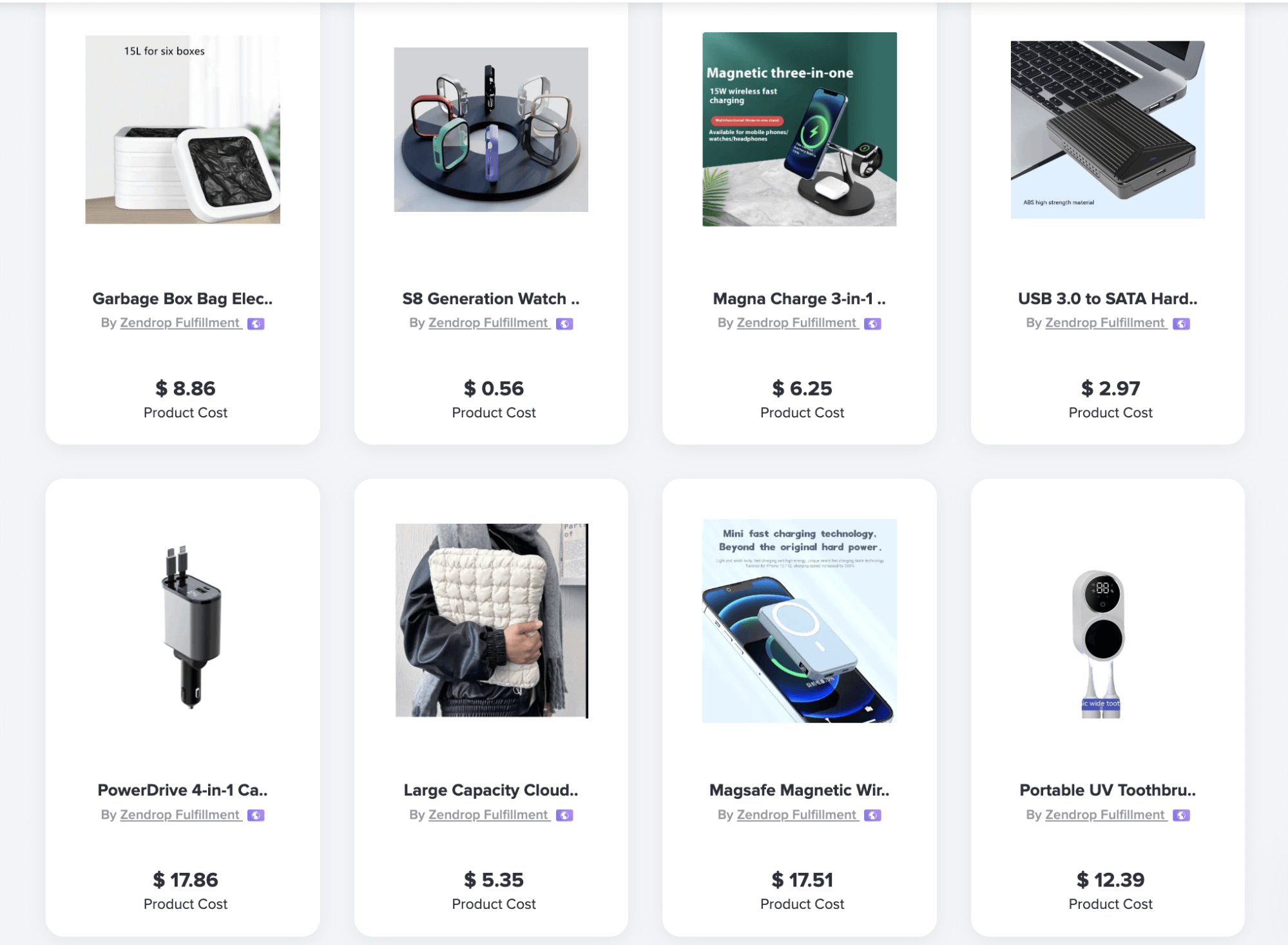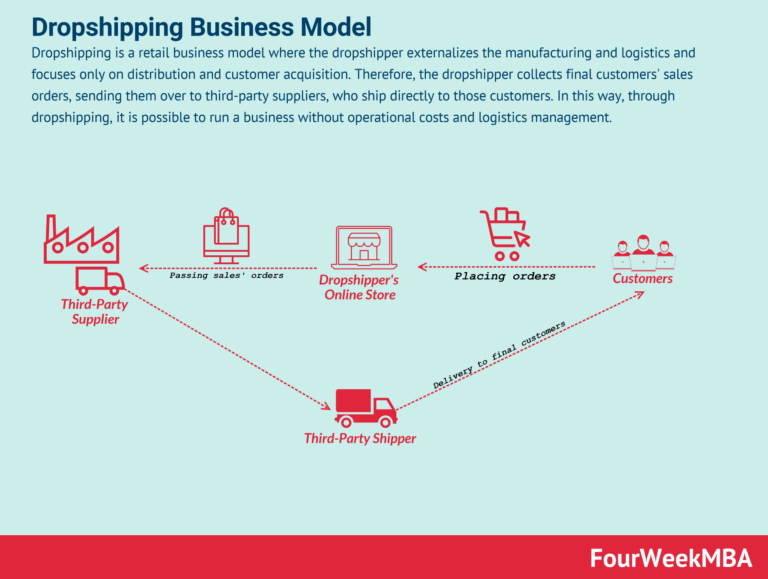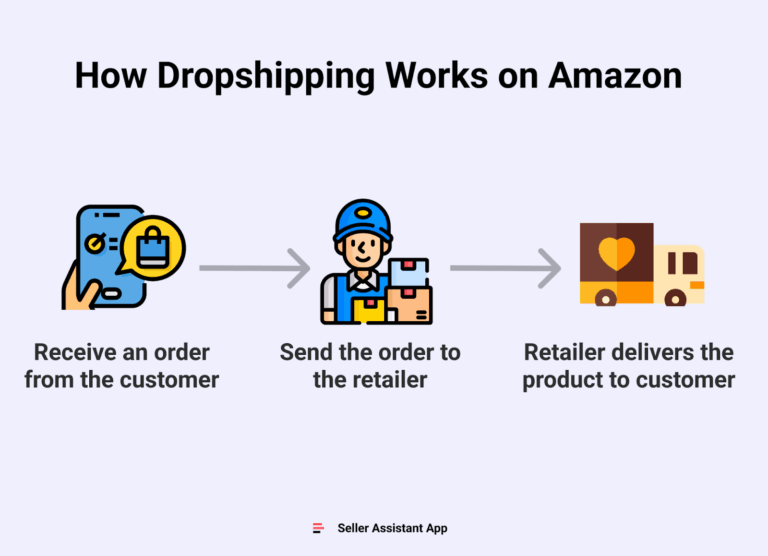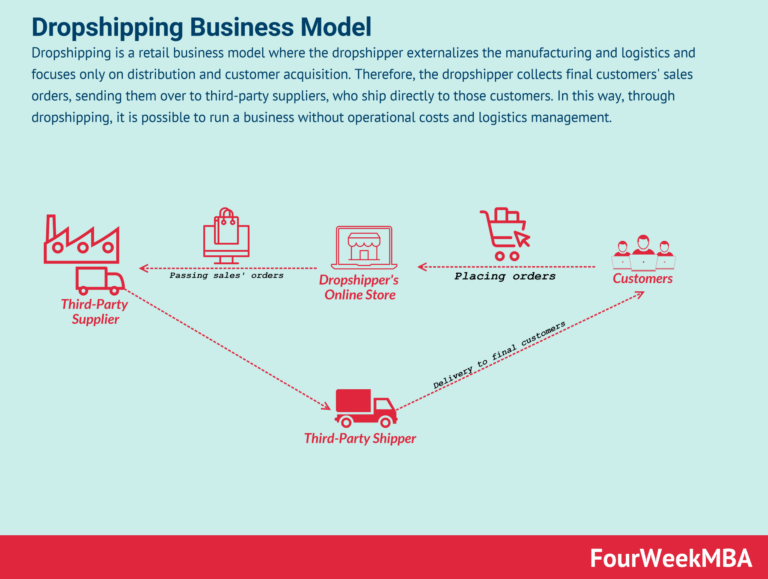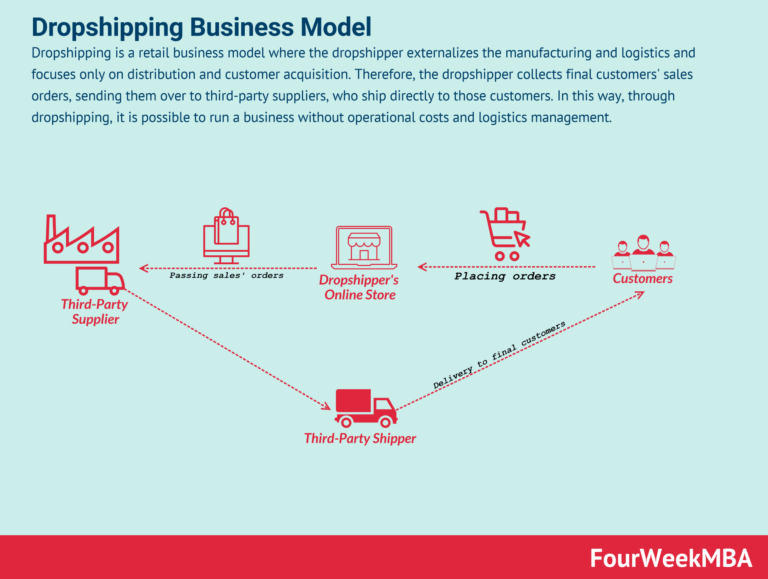How to Start Dropshipping in 2025 (A Beginner’s Guide)
Your Complete Guide to popular dropshipping items
Welcome to Your Entrepreneurial Journey
Congratulations on taking the first step toward becoming a successful entrepreneur! The desire to start your own business is a bold and commendable ambition. In today’s digital age, dropshipping has emerged as an accessible and attractive business model for aspiring entrepreneurs like you. It allows you to sell products online without the need for inventory, which means you can launch your store with minimal upfront investment.
What is Dropshipping?
Simply put, dropshipping is a retail fulfillment method where you, as the store owner, don’t keep the products you sell in stock. Instead, when you sell a product, you purchase the item from a third party—typically a wholesaler or manufacturer—who then ships it directly to your customer. This model eliminates the burden of managing inventory and handling shipping logistics, giving you the flexibility to focus on marketing and growing your brand.
Why Choose Dropshipping?
The appeal of dropshipping lies in its low startup costs and flexibility. You can start your online store from anywhere in the world, work at your own pace, and adjust your product offerings based on market trends and customer demands. Additionally, with the rise of e-commerce, there is a vast array of products available for dropshipping, making it easier than ever to find a niche that resonates with your interests and target audience.
What This Guide Will Cover
In this comprehensive guide, we will walk you through the entire process of identifying popular dropshipping items and successfully launching your online store. You will learn how to:
- Research and Identify Trending Products: Discover which product categories are currently in demand and how to leverage market trends to find your niche.
- Select Reliable Suppliers: Understand how to choose trustworthy suppliers who can provide quality products and reliable shipping.
- Set Up Your Online Store: Get step-by-step instructions on how to create an appealing online storefront that attracts customers.
- Market Your Products: Learn effective marketing strategies to drive traffic to your store and convert visitors into customers.
- Make Your First Sale: Gain actionable tips on how to optimize your sales process and celebrate your initial success.
As you embark on this exciting journey, remember that every successful entrepreneur started with a dream. With dedication, research, and the right guidance, you can turn that dream into a thriving reality. Let’s dive into the world of dropshipping and unlock the potential that awaits you!
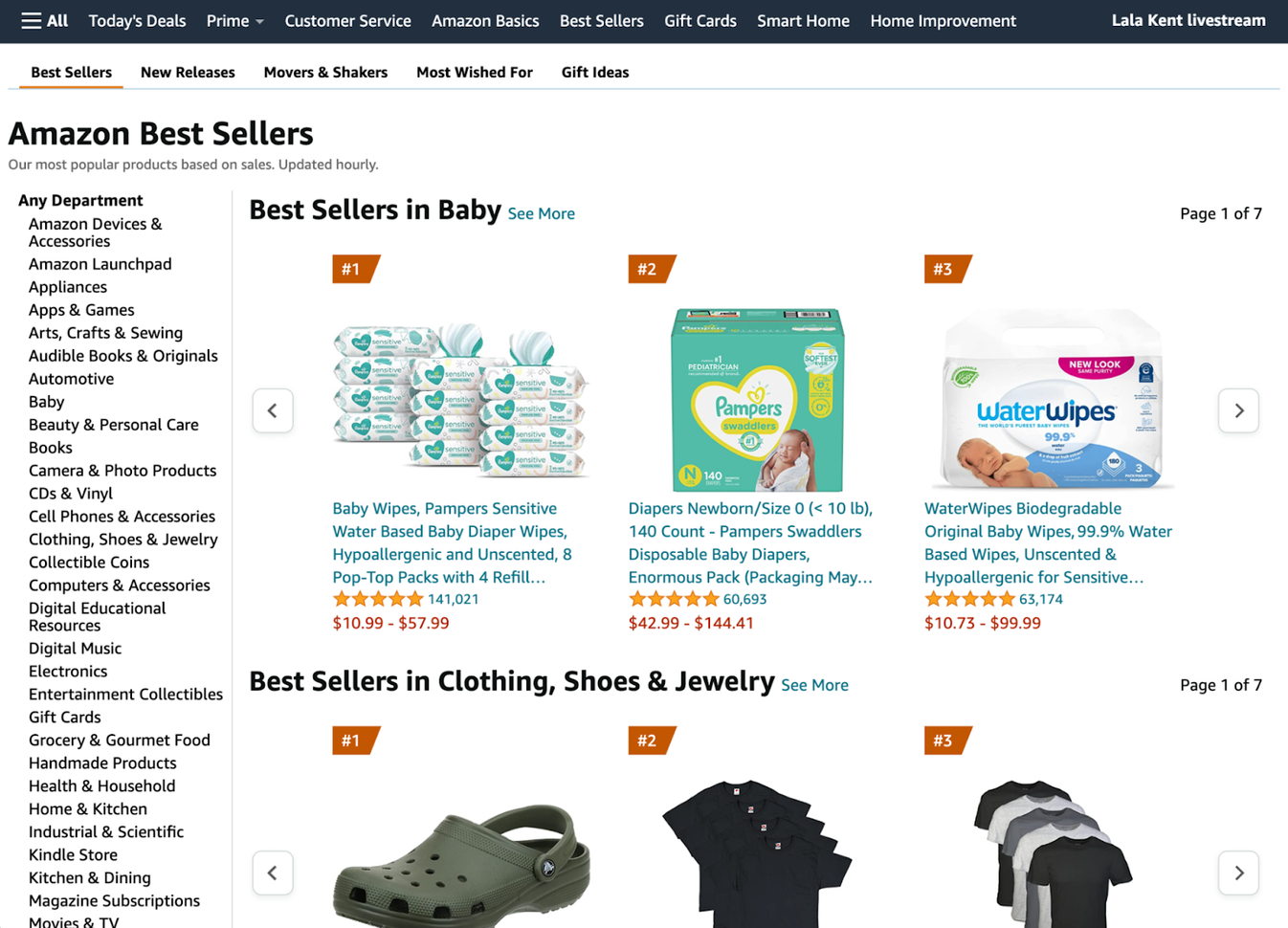
What You’ll Learn In This Guide
- Your Complete Guide to popular dropshipping items
- How Does Dropshipping Actually Work? A Step-by-Step Breakdown
- The Pros and Cons of Dropshipping: Is It Right for You?
- Step 1: Finding a Profitable Niche and Winning Products
- Step 2: Choosing the Right Dropshipping Suppliers
- Step 3: Building Your Online Store
- Step 4: Marketing Your Dropshipping Business to Get Sales
- Common Mistakes to Avoid as a Beginner
- Frequently Asked Questions (FAQs) about popular dropshipping items
- Conclusion: Your Next Steps to Launching Your Business
- Important Disclaimer
How Does Dropshipping Actually Work? A Step-by-Step Breakdown
Understanding the Dropshipping Model: A Step-by-Step Guide
If you’re considering starting a dropshipping business, it’s essential to understand how the model works. Think of yourself as a digital storefront and the middleman between the customer and the supplier. Here’s a clear, step-by-step breakdown of the dropshipping process:
- Customer Places an Order on Your Online Store
- Your journey begins when a customer browses your online store and finds a product they want to purchase. They add the item to their cart and proceed to checkout. This step is crucial because it initiates the entire transaction process.
-
Tip: Ensure your store is user-friendly and visually appealing to enhance the shopping experience and encourage purchases.
-
You Receive the Payment
- Once the customer completes their order, the payment is processed through your chosen payment gateway (like PayPal, Stripe, etc.). This means the funds are transferred from the customer’s account to yours, minus any transaction fees.
-
Tip: Be transparent about shipping costs and estimated delivery times to manage customer expectations and build trust.
-
You Forward the Order to Your Supplier
- After receiving the payment, you promptly forward the order details to your dropshipping supplier. This typically includes the customer’s shipping address and the product details. Depending on your arrangement, this can be done manually or automatically through an integration.
-
Tip: Establish good communication with your suppliers to ensure they fulfill orders accurately and on time. Reliability is key to maintaining customer satisfaction.
-
The Supplier Ships the Product Directly to the Customer
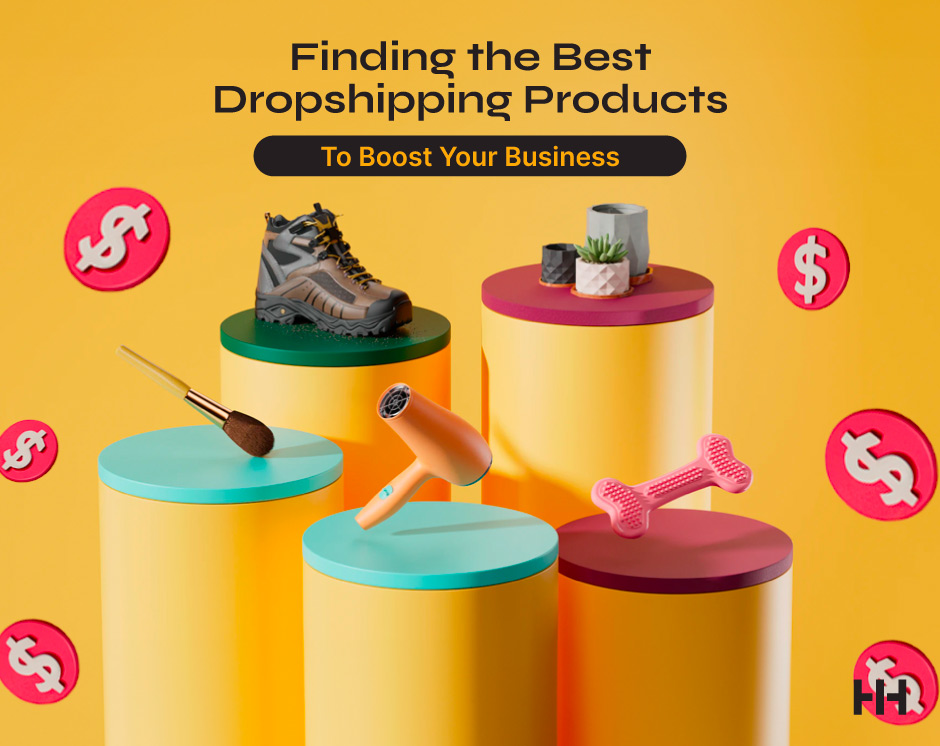
- The dropshipping supplier takes care of packaging and shipping the product directly to the customer. This means you don’t handle any inventory or shipping logistics, which is one of the primary advantages of dropshipping.
- Tip: Provide your customers with tracking information as soon as the order is shipped. This not only improves customer satisfaction but also reduces inquiries about order status.
The Flow of Money and Goods
Understanding the flow of money and goods is vital for a successful dropshipping business. Here’s how it works:
- Money Flow:
- The customer pays you directly for the order. For example, if a customer buys a product for $50, that amount is credited to your account (minus transaction fees).
-
You then pay the supplier their wholesale price for that product, say $30. Your profit is the difference between these two amounts, in this case, $20.
-
Goods Flow:
- The product moves from the supplier to the customer without ever passing through your hands. You act as the intermediary, facilitating the transaction without holding any inventory. This is similar to a restaurant that takes orders and serves food without cooking it themselves; they rely on the kitchen (supplier) to prepare and deliver the meals.
Final Thoughts
Starting a dropshipping business can be an excellent way to enter the world of e-commerce with minimal investment. By understanding each step of the process and ensuring clear communication with your suppliers and customers, you can create a seamless shopping experience. Remember, the key to success lies in providing exceptional customer service, offering in-demand products, and consistently optimizing your store to meet the needs of your target audience. Embrace the journey, and you’ll be well on your way to building a successful online business!
The Pros and Cons of Dropshipping: Is It Right for You?
| ### Advantages of Dropshipping (Pros) | Challenges of Dropshipping (Cons) |
|---|---|
| 1. Low Startup Costs: You don’t need to invest in inventory upfront, making it easier to start with minimal financial risk. | 1. Low Profit Margins: Competition can drive prices down, resulting in lower profit margins compared to traditional retail. |
| 2. Wide Product Selection: You can offer a diverse range of products without the burden of holding inventory. | 2. High Competition: The ease of entry attracts many sellers, making it challenging to stand out in a crowded market. |
| 3. Location Independence: As long as you have internet access, you can run your dropshipping business from anywhere in the world. | 3. Supplier Reliability: Your business depends on suppliers for product quality and shipping; unreliable suppliers can harm your reputation. |
| 4. Scalability: You can easily scale your business without worrying about logistics, as suppliers handle storage and shipping. | 4. Limited Control: You have less control over product quality, shipping times, and customer service, which can affect customer satisfaction. |
| 5. Minimal Overhead: Without the need for warehousing or inventory management, operational costs are significantly lower. | 5. Customer Service Challenges: Handling returns and customer complaints can be complicated due to third-party involvement. |
| 6. Easier Market Testing: You can test new products quickly without significant risk, allowing you to respond to market trends. | 6. Dependency on Suppliers: Any issues with suppliers, such as stock shortages or price increases, directly impact your business operations. |
| 7. Potential for Passive Income: Once established, dropshipping can generate income with minimal ongoing effort, especially with effective marketing strategies. | 7. Shipping Complexities: Managing shipping from multiple suppliers can lead to higher costs and complicated logistics. |
Exploring the Advantages of Dropshipping
One of the most appealing aspects of dropshipping for aspiring entrepreneurs is the low startup cost. Unlike traditional retail models that require significant upfront investment in inventory, dropshipping allows you to start your business with little more than a website and a marketing strategy. This reduced financial risk enables you to test the waters of e-commerce without the fear of losing a substantial amount of money.
Additionally, dropshipping offers an extensive product selection. You can curate a diverse inventory without the limitations of physical storage space. This flexibility allows you to adapt quickly to market trends and consumer preferences, ensuring that your product offerings remain relevant and appealing. With the right research, you can identify in-demand niches, such as eco-friendly products or tech gadgets, and tailor your store accordingly.
Another significant advantage is the location independence dropshipping provides. As an online business, you can manage your operations from virtually anywhere with an internet connection. This freedom allows for a flexible lifestyle, whether you’re working from home, traveling, or even exploring new business opportunities abroad.
Furthermore, dropshipping is inherently scalable. As your business grows, you can add new products without the logistical hurdles typically associated with inventory management. Your suppliers handle the heavy lifting, allowing you to focus on marketing and customer engagement. This scalability is particularly appealing for those looking to expand their business without overwhelming operational complexities.
Lastly, dropshipping offers the potential for passive income. Once you establish a steady stream of sales and a reliable marketing strategy, your business can continue to generate revenue with minimal daily effort. This can lead to a more balanced lifestyle where you can invest time in other interests or ventures.
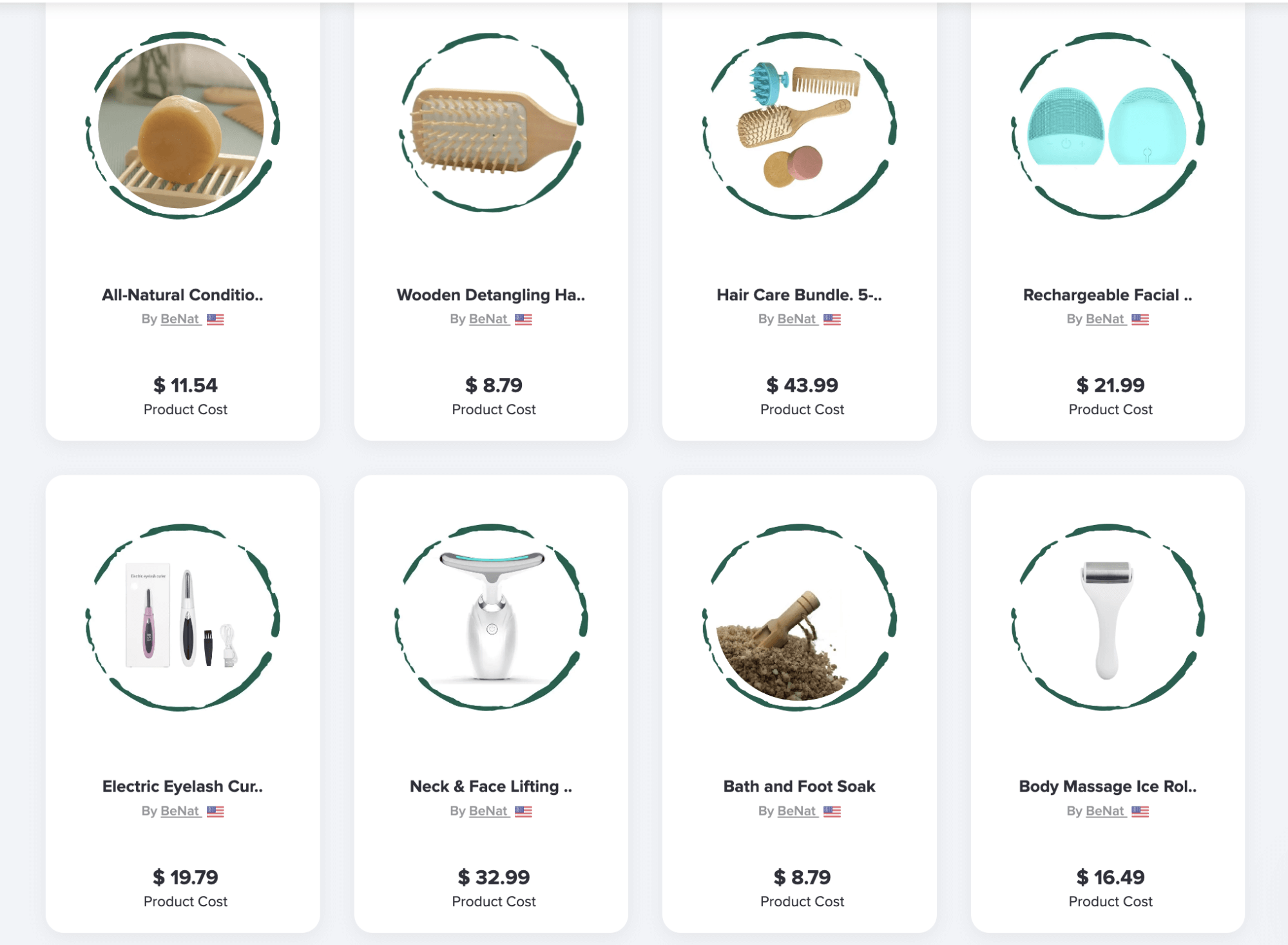
Addressing the Challenges of Dropshipping
While the advantages are enticing, it’s essential to consider the challenges associated with dropshipping. One of the primary downsides is the low profit margins. Due to the high level of competition in the dropshipping space, pricing wars can ensue, forcing many sellers to reduce their prices to stay competitive. This can squeeze profit margins significantly, making it imperative to find a unique selling proposition or niche to differentiate your store.
Moreover, the high level of competition can make it difficult for new dropshippers to gain traction. With countless sellers vying for attention in popular niches, it’s crucial to implement effective marketing strategies and establish a strong brand identity to stand out in a crowded marketplace.
Another significant challenge is the reliability of suppliers. Your business’s success is closely tied to your suppliers’ ability to deliver quality products on time. Issues such as stock shortages or delays in shipping can lead to dissatisfied customers and tarnished reputations. Conducting thorough research and establishing solid relationships with trustworthy suppliers is vital for mitigating these risks.
Additionally, dropshipping can present customer service challenges. Handling returns, exchanges, or customer complaints can become complicated due to the third-party nature of the business. Ensuring a smooth and satisfactory experience for your customers is crucial for building brand loyalty, and any hiccups in this area can lead to negative reviews and decreased sales.
In conclusion, while dropshipping offers numerous benefits, it’s essential to weigh these against the potential challenges. By understanding both sides, you can make an informed decision about whether this business model aligns with your goals and resources. If you choose to embark on this journey, stay proactive, continuously learn, and adapt to the evolving market landscape for the best chance of success.
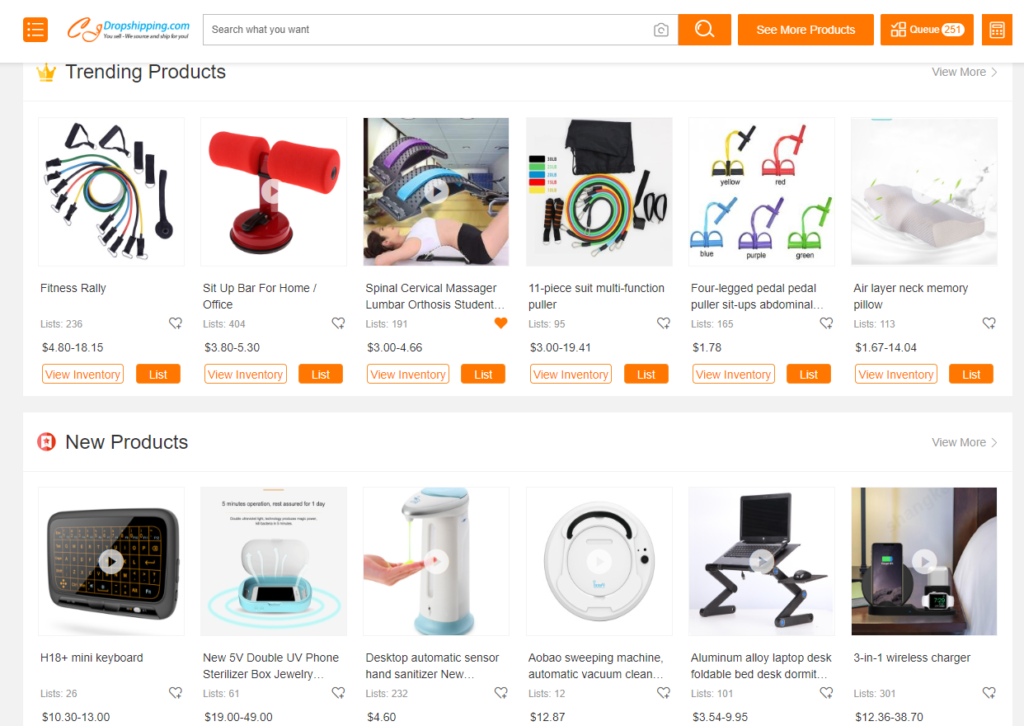
Step 1: Finding a Profitable Niche and Winning Products
What Makes a Good Niche?
Choosing the right niche is one of the most critical decisions you will make as a dropshipping entrepreneur. A good niche is characterized by several key factors:
-
Passion and Interest: Ideally, you should have a genuine interest in the niche you choose. This passion will keep you motivated through the challenges of running a business and will resonate with your audience.
-
Market Demand: A profitable niche should have consistent demand. Research trends and consumer behavior to ensure that the products you want to sell are sought after. Tools like Google Trends and keyword research can help assess search volume and interest over time.
-
Competition Analysis: While some competition can be healthy, a saturated market can make it difficult to stand out. Evaluate the level of competition in your chosen niche. Look for gaps in the market or underserved audiences that you can target.
-
Profitability: Ensure that the niche has potential for profit. Assess the average price point of products within the niche, as well as the margins you can achieve when dropshipping. Ideally, aim for a niche where you can mark up products by at least 30-50%.
-
Target Audience: Identify who your target customers are. Understanding their demographics, interests, and pain points will help you tailor your marketing strategies and product offerings effectively.
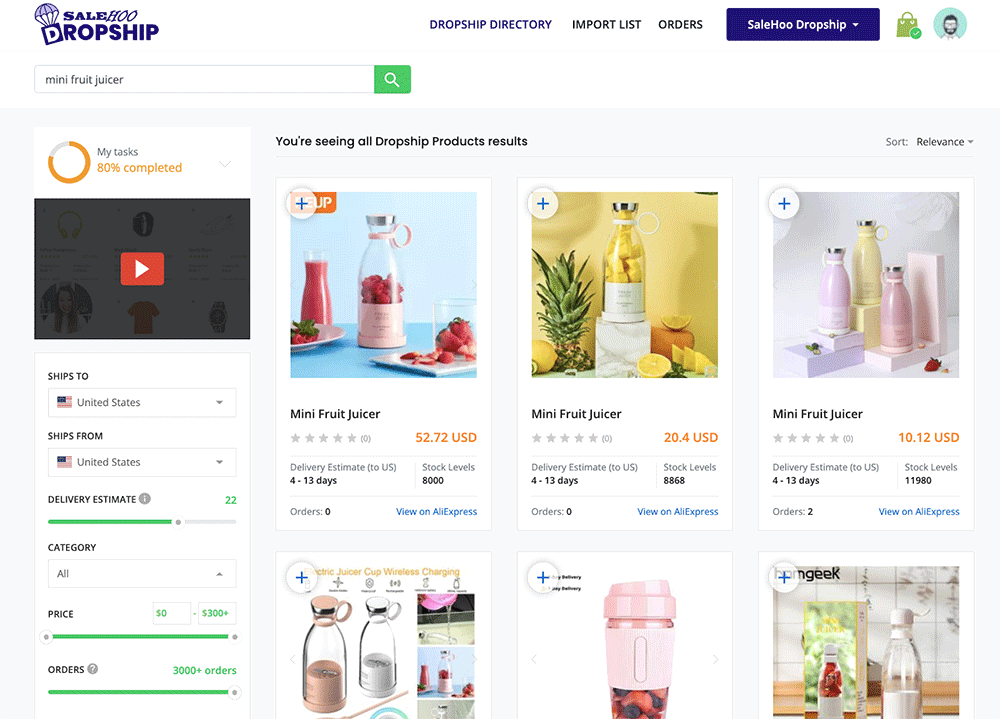
How to Brainstorm Niche Ideas
Brainstorming niche ideas can be an exciting yet daunting task. Here are some actionable steps to help you generate ideas:
-
Personal Interests and Hobbies: Start by listing your passions and hobbies. What are you knowledgeable about? What do you enjoy doing in your free time? This can be a goldmine for niche ideas.
-
Market Research: Use tools like Google Trends, SEMrush, and Ahrefs to identify trending topics and products. Look for emerging trends in various industries that have the potential for growth.
-
Social Media Exploration: Platforms like Instagram, TikTok, and Pinterest are treasure troves for discovering popular trends and niche markets. Follow influencers and observe what products they promote.
-
Online Marketplaces: Browse through Amazon, eBay, and Etsy to see what products are popular and highly rated. Look at the “Best Sellers” and “Trending” sections for inspiration.
-
Forums and Communities: Engage with online communities related to your interests (e.g., Reddit, Quora, niche-specific forums). Pay attention to what questions people are asking and what problems they are seeking solutions for.
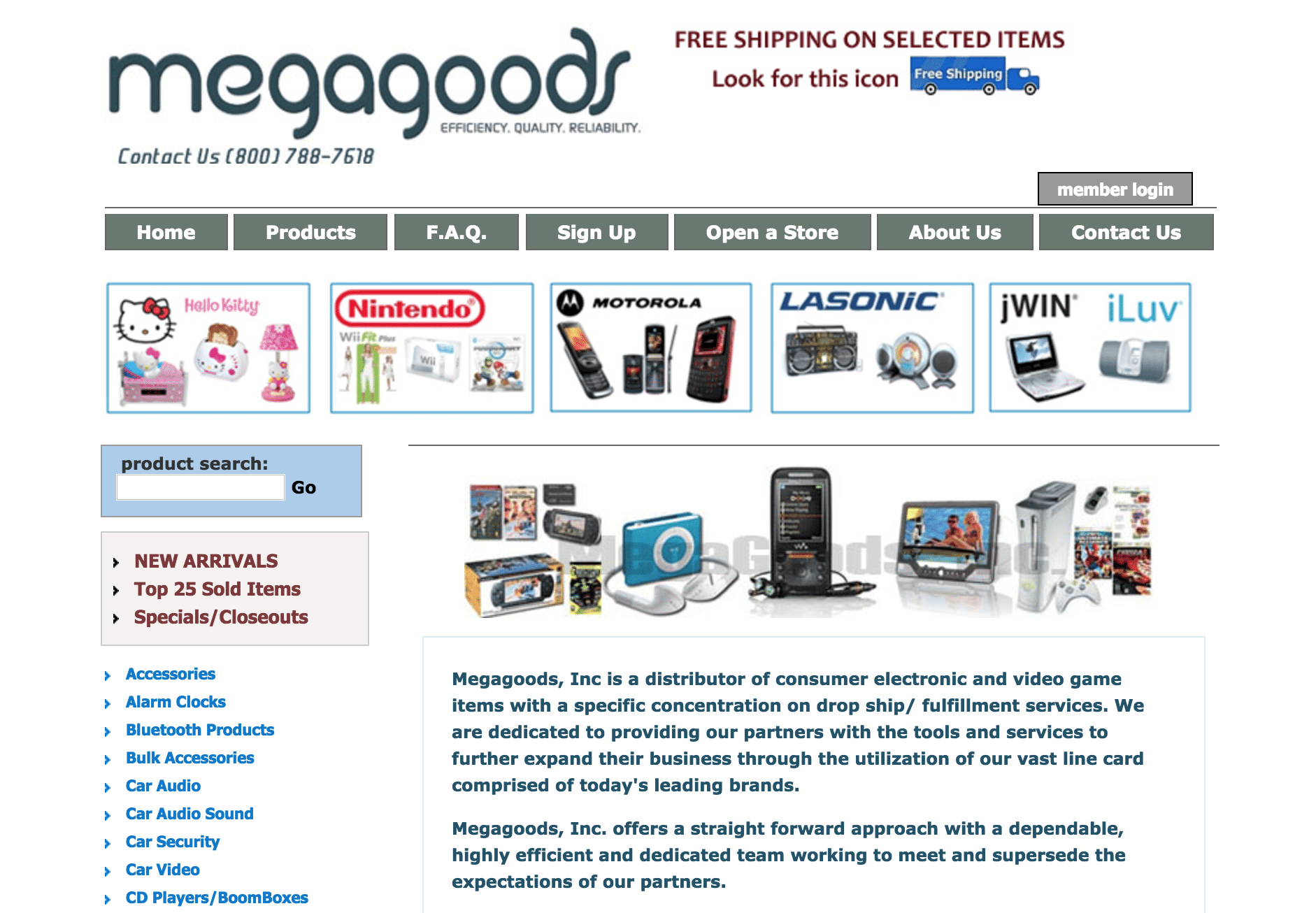
-
Competitor Analysis: Investigate existing stores in your potential niche. What products are they selling? What gaps can you identify in their offerings? Consider how you can differentiate your store.
Validating Your Niche
Once you have a few niche ideas, it’s essential to validate them to ensure there’s a market for your products. Here are some effective methods:
-
Surveys and Questionnaires: Create surveys using tools like Google Forms or SurveyMonkey to gather insights from your target audience. Ask about their preferences, pain points, and willingness to pay for certain products.
-
Keyword Research: Use tools like Ubersuggest or Google Keyword Planner to find relevant keywords associated with your niche. Analyze search volume and competition to gauge interest.
-
Social Media Polls: Utilize social media platforms to conduct polls or ask questions about your niche ideas. This can provide immediate feedback from potential customers.
-
Test Products: Before fully committing to a niche, consider testing a few products with a small budget. Use platforms like eBay or Amazon to sell these products at a low cost and gauge customer interest.
-
Engagement Metrics: If you already have a following on social media or a blog, post content related to your niche ideas and analyze engagement metrics. High engagement can indicate a strong interest in your niche.
Methods for Finding Winning Products
Once you’ve validated your niche, the next step is to find winning products. Here are effective methods and tools to help you identify high-potential products for your dropshipping business:
-
Supplier Marketplaces: Platforms like AliExpress, Oberlo, and SaleHoo are excellent resources for discovering trending products. Look for items with high ratings, significant order volumes, and positive reviews.
-
Social Media Trend Tools: Utilize tools like BuzzSumo and TrendHunter to identify trending products and topics across social media platforms. These tools can help you spot emerging trends before they become mainstream.
-
Criteria for Winning Products:
- Price Point: Aim for products priced between $15 and $50. This range tends to attract impulse buyers while still providing a reasonable profit margin.
- Uniqueness: Choose products that are not easily available in local stores. Unique or niche products often attract more interest and can create a sense of urgency.
- Problem-Solving: Products that solve a specific problem tend to perform better. Identify common issues within your niche and look for products that address those pain points.
- Lightweight and Easy to Ship: Opt for products that are easy to ship to minimize shipping costs and complications. Lightweight items generally have lower shipping fees, making them more appealing to customers.
-
Visual Appeal: Products that are visually attractive can perform better on social media platforms, where imagery is crucial for engagement.
-
Seasonal and Trending Products: Keep an eye on seasonal trends and holidays. Products that align with specific seasons or events (like Christmas decorations or summer gear) can lead to spikes in sales.
-
Customer Feedback and Reviews: Pay attention to customer reviews on supplier marketplaces. Products with high ratings and positive feedback are often indicative of quality and demand.
-
Competitor Analysis: Monitor what successful competitors are selling. Use tools like SimilarWeb or SEMrush to analyze their traffic and product offerings. This can provide insights into what’s working in your niche.
Conclusion
Finding a profitable niche and winning products is a journey that requires research, creativity, and validation. By understanding what makes a good niche, brainstorming effectively, validating your ideas, and employing various methods to find products, you can set a strong foundation for your dropshipping business. Remember, the key is to stay adaptable and responsive to market trends, ensuring that your business evolves alongside consumer needs. Happy dropshipping!
Step 2: Choosing the Right Dropshipping Suppliers
When starting your dropshipping journey, one of the most crucial steps is selecting the right suppliers. Your suppliers will significantly impact your business’s success, from product quality to shipping times and customer service. In this guide, we will explore some of the most popular platforms for finding dropshipping suppliers, detailing their pros and cons, and providing a checklist of what to look for in a good supplier.
AliExpress
AliExpress is one of the largest and most well-known platforms for dropshipping. It connects international buyers with Chinese suppliers, offering a vast array of products across multiple categories.
Pros:
- Extensive Product Range: AliExpress boasts millions of products, making it easy to find items that suit various niches.
- Low Prices: Due to the competitive nature of the platform, you can often find products at lower prices than other suppliers.
- No Minimum Order Quantity: You can purchase individual items, which is perfect for dropshippers who want to test products without committing to large quantities.
- Buyer Protection: AliExpress offers buyer protection policies, ensuring that you receive your orders as described or your money back.
Cons:
- Long Shipping Times: Since most suppliers are based in China, shipping can take several weeks, which may frustrate customers expecting faster delivery.
- Quality Control Issues: The quality of products can vary significantly between suppliers, so thorough vetting is necessary.
- Communication Barriers: Some suppliers may have limited English proficiency, which can lead to misunderstandings.
CJ Dropshipping
CJ Dropshipping is a popular alternative to AliExpress, providing a more streamlined dropshipping experience with a focus on quality and faster shipping options.
Pros:
- Faster Shipping: CJ Dropshipping has warehouses in multiple countries, including the U.S., which can significantly reduce shipping times.
- Quality Control: CJ vets its suppliers more thoroughly, which helps ensure product quality.
- Custom Branding: They offer services like custom packaging and branding, which can enhance your brand identity.
- Product Sourcing: If you can’t find a specific product, CJ can help source it for you.
Cons:
- Higher Prices: While the quality may be better, the prices can be higher compared to AliExpress.
- Learning Curve: The platform may be less intuitive for beginners, requiring some time to get accustomed to its features.
- Limited Product Range: While they offer a good variety of products, it may not be as extensive as AliExpress.
USA-Based Suppliers
For dropshippers targeting the U.S. market, working with domestic suppliers can provide significant advantages, particularly in terms of shipping speed and customer service.
Pros:
- Faster Shipping: Products shipped from the U.S. typically arrive much quicker than those from overseas, often within a few days.
- Easier Returns: Handling returns can be simpler with domestic suppliers, improving customer satisfaction.
- Higher Trust Factor: Many customers prefer buying from U.S.-based companies, which can enhance your credibility.
- Better Communication: You’re less likely to encounter language barriers, facilitating smoother interactions.
Cons:
- Higher Costs: U.S. suppliers often have higher product costs, which can affect your profit margins.
- Limited Product Variety: Depending on the niche, you may find fewer options compared to international suppliers.
- Minimum Order Requirements: Some U.S. suppliers may have minimum order quantities, which can be a hurdle for new dropshippers.
What to Look for in a Good Supplier
When evaluating potential dropshipping suppliers, keep the following checklist in mind to ensure you partner with reliable and trustworthy vendors:
-
Communication: Ensure the supplier is responsive and communicates clearly. Quick replies can indicate a commitment to customer service.
-
Shipping Times: Investigate the average shipping times for the products you intend to sell. Aim for suppliers who can deliver within a reasonable timeframe.
-
Product Quality: Request samples if possible, or look for reviews and ratings from other sellers to gauge product quality before committing.
-
Return Policies: Understand the supplier’s return policies. A good supplier should offer a clear and fair return process for defective or unsatisfactory products.
-
Pricing: Compare prices across multiple suppliers to ensure you get the best deal without compromising quality.
-
Warehouse Locations: If possible, choose suppliers with warehouses in your target market to improve shipping efficiency.
-
Reliability: Research the supplier’s history. Look for long-standing suppliers with positive feedback and a good track record.
-
Payment Options: Ensure that the supplier offers secure payment methods that you are comfortable using.
-
Integration Capabilities: Check if the supplier can integrate with your e-commerce platform for seamless order processing.
-
Scalability: Consider whether the supplier can accommodate your business growth, including larger order quantities as your business expands.
Conclusion
Choosing the right dropshipping suppliers is a critical step in building a successful online business. By considering platforms like AliExpress, CJ Dropshipping, and USA-based suppliers, you can find the right fit for your niche and target market. Always prioritize communication, shipping times, product quality, and return policies to ensure a smooth operation. As you embark on your dropshipping journey, remember that the right suppliers can make all the difference in your success. Happy dropshipping!
Step 3: Building Your Online Store
Setting Up Your Online Store for Dropshipping Success
Building an online store for your dropshipping business is an exciting step in your entrepreneurial journey. While there are various platforms available, Shopify stands out as the most popular choice due to its user-friendly interface, extensive app ecosystem, and powerful features tailored for e-commerce. In this guide, we’ll walk you through the essential steps to set up your Shopify store effectively.
1. Choosing a Plan
The first step in setting up your Shopify store is selecting the right pricing plan. Shopify offers several options, including:
- Basic Shopify: Ideal for newcomers with essential features for a single online store.
- Shopify: Offers more advanced reporting and features for growing businesses.
- Advanced Shopify: Best for larger businesses needing advanced reporting and additional features.
As a beginner, starting with the Basic Shopify plan is often sufficient. You can always upgrade later as your business grows. Take advantage of Shopify’s free trial to explore the platform before committing to a plan.
2. Picking a Theme
Your store’s theme is crucial as it reflects your brand identity and affects user experience. Shopify provides a variety of free and paid themes that are customizable and mobile-responsive. Here’s how to choose the right one:
- Identify Your Brand: Consider your target audience and the products you’re selling. For example, a minimalist theme may suit a luxury product line, while a vibrant theme may work for a youthful apparel brand.
- Navigation and Usability: Ensure the theme allows for easy navigation. A cluttered layout can turn potential customers away.
- Customization Options: Look for themes that offer customization features, allowing you to tweak colors, fonts, and layouts to align with your brand.
Once you’ve chosen a theme, you can further customize it through the Shopify editor, adjusting colors, fonts, and images to create a unique shopping experience.
3. Setting Up Essential Pages
Creating essential pages for your online store is crucial for building trust and providing information to your customers. Here are key pages to include:
- About Us: Share your story, mission, and what sets your brand apart. This personal touch helps establish a connection with your audience.
- Contact: Provide multiple ways for customers to reach you, including an email address, phone number, and a contact form. Quick responses to inquiries can enhance customer satisfaction.
- Policies: Clearly outline your shipping, return, and privacy policies. Transparency in these areas fosters trust and can reduce customer service issues later.
To create these pages, navigate to the “Online Store” section in Shopify and select “Pages.” Here you can add new pages and configure them as needed.
4. Installing Key Apps
Shopify’s app store is a treasure trove of tools that can enhance your dropshipping store. Here are some essential apps to consider:
- Product Import Tools: Tools like DSers or CJ Dropshipping allow you to easily import products from suppliers directly into your store. They automate the process of fulfilling orders and managing inventory.
- Email Marketing: Apps like Klaviyo or Omnisend help you build and manage email marketing campaigns, keeping your customers engaged and informed about promotions.
- Analytics Tools: Consider installing analytics apps to track customer behavior and sales performance, allowing you to make data-driven decisions.
To install an app, go to the Shopify App Store, search for the app you need, and click “Add app.” Follow the prompts to complete the installation.
5. Setting Up Payment Gateways
Once your store is set up, you’ll need to choose how you’ll accept payments. Shopify supports a wide range of payment gateways, including:
- Shopify Payments: This is Shopify’s built-in payment processor, which allows you to accept credit cards directly and offers competitive transaction fees.
- PayPal: A widely recognized payment option, PayPal can increase trust and ease of payment for customers.
- Alternative Payment Methods: Depending on your target market, consider integrating options like Apple Pay, Google Pay, or cryptocurrency payments.
To set up payment gateways, go to the “Settings” section of your Shopify dashboard, select “Payments,” and choose your preferred options. Follow the prompts to configure each payment method.
Alternative: WooCommerce
While Shopify is a leading platform for dropshipping, WooCommerce is a viable alternative if you prefer more control and customization. WooCommerce is a WordPress plugin that turns your website into an online store. It offers flexibility and numerous plugins to enhance functionality. However, it may require more technical knowledge compared to Shopify, especially for beginners.
Conclusion
Setting up your online dropshipping store with Shopify is a manageable and rewarding process. By carefully selecting your plan, theme, and essential pages, installing key apps, and setting up payment gateways, you’ll be well on your way to launching a successful online business. Remember, the journey of entrepreneurship is a marathon, not a sprint. Stay committed, adapt as needed, and watch your business thrive!
Step 4: Marketing Your Dropshipping Business to Get Sales
Social Media Marketing (TikTok & Instagram)
Social media platforms like TikTok and Instagram are essential for promoting your dropshipping business due to their vast user base and visual nature. Here are actionable tips to leverage these platforms effectively:
- Create Engaging Content
- Tip: Focus on creating short, engaging videos that showcase your products in action. For instance, if you sell kitchen gadgets, make quick cooking tutorials using your products.
-
Example: A TikTok video demonstrating a unique kitchen tool, like a vegetable chopper, can show how it saves time and enhances meal prep.
-
Utilize User-Generated Content
- Tip: Encourage your customers to share photos or videos using your products and tag your store. You can incentivize this by offering discounts or featuring their content on your page.
-
Example: Run a monthly contest where the best photo of your product wins a gift card or free product, increasing engagement and trust.
-
Collaborate with Influencers
- Tip: Partner with micro-influencers who align with your brand values. They often have a loyal following and can effectively promote your products to a targeted audience.
-
Example: If you sell eco-friendly beauty products, collaborate with beauty influencers who focus on sustainable living to reach an audience that values your products.
-
Use Hashtags Strategically
- Tip: Research and use relevant hashtags to increase the visibility of your posts. Combine popular hashtags with niche-specific ones for a better reach.
-
Example: Use a mix of broad hashtags like #Beauty and niche ones like #VeganSkincare to attract both general and targeted audiences.
-
Run Time-Limited Promotions
- Tip: Create urgency by promoting limited-time offers through stories and posts. This can drive immediate traffic to your store.
- Example: Post a countdown for a flash sale on Instagram Stories, enticing followers to act quickly to avoid missing out.
Paid Advertising (Facebook/Instagram Ads)
Paid advertising can yield quick results and help you reach a larger audience. Here’s how to get started:
- Define Your Target Audience
- Tip: Use Facebook’s audience targeting features to define your ideal customers based on demographics, interests, and behaviors.
-
Example: If you’re selling pet supplies, target pet owners or people interested in pet-related content.
-
Create Compelling Ad Copy and Visuals
- Tip: Your ad should include a strong call-to-action (CTA) and high-quality images or videos of your products.
-
Example: An ad for a cute pet accessory could feature a happy pet wearing the product, with a CTA like “Shop Now for Happy Pets!”
-
A/B Testing
- Tip: Test different versions of your ads to see which performs better. Change one element at a time, such as the image, headline, or CTA.
-
Example: Run two versions of an ad featuring different pet toys, one with a playful dog and another with a cat, to see which gets more engagement.
-
Retargeting Ads
- Tip: Use retargeting to reach users who visited your site but didn’t make a purchase. This can remind them of what they left behind.
-
Example: Create ads that show the products they viewed, offering a small discount to encourage them to complete their purchase.
-
Monitor and Adjust Your Campaigns
- Tip: Regularly check your ad performance metrics and adjust your budget, targeting, and creative based on what’s working.
- Example: If you notice that ads targeted at a specific age group are converting better, consider increasing the budget for that demographic.
Search Engine Optimization (SEO)
Optimizing your store for search engines is crucial for attracting organic traffic. Here are some SEO strategies to implement:
- Keyword Research
- Tip: Use tools like Google Keyword Planner or Ubersuggest to find keywords related to your products. Focus on long-tail keywords that indicate purchase intent.
-
Example: If you sell eco-friendly water bottles, target keywords like “best reusable water bottle” or “eco-friendly water bottles for travel.”
-
Optimize Product Descriptions
- Tip: Write unique, detailed product descriptions that incorporate your target keywords naturally. Avoid copying manufacturer descriptions.
-
Example: Instead of simply stating “Stainless Steel Water Bottle,” describe its benefits, features, and ideal uses while weaving in relevant keywords.
-
Improve Site Speed and Mobile Responsiveness
- Tip: Ensure your website loads quickly and is mobile-friendly, as these factors affect your search ranking and user experience.
-
Example: Use tools like Google PageSpeed Insights to analyze your site’s speed and get suggestions for improvements.
-
Create Quality Content
- Tip: Start a blog related to your niche, providing valuable content that attracts visitors. Use SEO best practices to optimize your blog posts.
-
Example: If you sell beauty products, write articles on skincare routines, product benefits, or reviews, incorporating relevant keywords.
-
Build Backlinks
- Tip: Reach out to relevant blogs or websites for guest posting opportunities. This can help increase your site’s authority and improve your search ranking.
- Example: Offer to write a guest post on a lifestyle blog about the benefits of your beauty products in exchange for a link back to your store.
Email Marketing
Email marketing remains one of the most effective ways to engage with customers and drive sales. Here’s how to get started:
- Build Your Email List
- Tip: Create lead magnets like discount codes or free resources to encourage visitors to subscribe to your email list.
-
Example: Offer a 10% discount on the first purchase for new subscribers, prompting them to sign up.
-
Segment Your Audience
- Tip: Divide your email list into segments based on customer behavior, interests, or demographics to send targeted campaigns.
-
Example: Send personalized recommendations based on previous purchases, such as promoting new pet toys to customers who bought pet food.
-
Craft Compelling Subject Lines
- Tip: Your email subject line should be catchy and create a sense of urgency or curiosity to increase open rates.
-
Example: Use subject lines like “Last Chance: 20% Off Your Favorite Products!” or “See What’s New This Week!”
-
Create Engaging Content
- Tip: Ensure your email content is visually appealing and includes a clear CTA. Consider using images, videos, or customer testimonials.
-
Example: Include a mix of product highlights, customer stories, and special promotions in your newsletters.
-
Analyze and Optimize Your Campaigns
- Tip: Use email marketing tools to track open rates, click-through rates, and conversions. Adjust your strategies based on this data.
- Example: If you notice that emails sent on a specific day perform better, consider making that your regular sending day.
Conclusion
By implementing these marketing strategies—social media marketing, paid advertising, SEO, and email marketing—you can effectively promote your dropshipping business and drive sales. Stay consistent, track your results, and adapt your approach based on what works best for your audience. Remember, marketing is a journey, and each step you take brings you closer to your entrepreneurial goals. Keep experimenting, learning, and growing your business!
Common Mistakes to Avoid as a Beginner
1. Choosing a Bad Niche
One of the most critical mistakes beginners make is selecting a niche that lacks demand or is overly saturated. This can lead to low sales and wasted marketing efforts.
Solution: Conduct thorough market research before finalizing your niche. Use tools like Google Trends, social media platforms, and market analysis websites to gauge demand. Look for emerging trends and underserved markets where competition is low but interest is rising. Focus on niches that resonate with your interests or passions to maintain motivation.
2. Not Testing Products
Many beginners rush to list products without testing them first. This can result in selling low-quality items that lead to unhappy customers and returns.
Solution: Before launching a product, order samples to evaluate quality, shipping times, and packaging. Use these samples for product photography and marketing materials. Additionally, consider running small-scale tests with targeted ads to see how well products perform before fully committing.
3. Poor Customer Service
Neglecting customer service can severely damage your brand’s reputation. Customers expect prompt responses and resolutions to their issues. Failing to meet these expectations can lead to negative reviews and lost sales.
Solution: Set up a dedicated customer service system. Use chatbots for quick responses and ensure your team is trained to handle inquiries efficiently. Aim for fast response times and resolve issues amicably. Consider using customer feedback to improve your offerings continuously.
4. Ignoring Shipping Times
Long shipping times can deter potential customers and lead to dissatisfaction. Many beginners underestimate the importance of clear communication regarding shipping expectations.
Solution: Be transparent about shipping times on your website. Choose suppliers with reasonable delivery times and consider using fulfillment centers that can expedite shipping. Set realistic expectations with customers and provide tracking information to keep them informed about their order status.
5. Unrealistic Profit Expectations
New entrepreneurs often expect to make quick profits without understanding the costs involved in dropshipping. This can lead to disappointment and frustration.
Solution: Educate yourself about the total costs involved, including product costs, shipping fees, marketing expenses, and platform fees. Create a detailed financial plan and set realistic sales goals based on your research. Understand that building a successful dropshipping business takes time and patience.
6. Overlooking Marketing Strategies
Many beginners underestimate the importance of marketing and rely solely on organic traffic. Without a solid marketing strategy, potential customers may never find your store.
Solution: Develop a comprehensive marketing plan that includes social media, email marketing, content marketing, and paid advertising. Use platforms like Instagram and TikTok to showcase your products visually. Consider collaborating with influencers in your niche to expand your reach.
7. Failing to Optimize Your Website
A poorly designed website can deter customers from making purchases. Common issues include slow loading times, confusing navigation, and lack of mobile optimization.
Solution: Invest time in creating a user-friendly website. Use responsive designs that work well on mobile devices. Optimize loading speeds by compressing images and reducing unnecessary plugins. Regularly update your website to keep it fresh and engaging.
8. Not Building an Email List
Many beginners neglect the power of email marketing, missing out on a valuable channel for customer engagement and retention.
Solution: Start building your email list from day one. Offer incentives like discounts or exclusive content in exchange for email sign-ups. Use email marketing tools to send regular newsletters, promotions, and product updates to keep your audience engaged and informed.
9. Ignoring Analytics
Failing to track key performance indicators (KPIs) can prevent you from understanding your business’s health and growth opportunities.
Solution: Utilize analytics tools provided by your e-commerce platform and third-party services like Google Analytics. Monitor metrics such as traffic sources, conversion rates, and customer behavior. Use this data to refine your strategies and make informed decisions.
10. Skipping Legal Considerations
Many new dropshippers overlook legal aspects, including business registration, tax compliance, and intellectual property rights. This can lead to future headaches.
Solution: Research the legal requirements for running a dropshipping business in your region. Register your business, obtain necessary permits, and understand your tax obligations. Consult with a legal professional if necessary to ensure compliance and protect your business.
By avoiding these common mistakes and implementing actionable solutions, you can set yourself up for success in the dropshipping world. Remember, persistence and continuous learning are key components of entrepreneurship.
Frequently Asked Questions (FAQs) about popular dropshipping items
1. What are the most popular dropshipping items to sell?
Popular dropshipping items often include categories like apparel (e.g., t-shirts, loungewear), beauty products (e.g., skincare items, makeup), kitchen tools (e.g., reusable water bottles, food storage containers), baby products (e.g., organic baby clothes, teething toys), pet supplies (e.g., dog toys, grooming products), and home décor (e.g., pillows, rugs). Researching current trends and consumer interests can help you identify the best items for your store.
2. How much money do I need to start a dropshipping business?
Starting a dropshipping business can be done with minimal investment. Generally, you may need between $200 to $1,500 to cover costs like setting up a website, marketing, and purchasing initial stock if needed. Platforms like Shopify offer free trials, allowing you to test the waters without upfront costs. Remember, the more you invest in marketing and branding, the higher your chances of success.
3. Do I need to register a company to start dropshipping?
While it’s not mandatory to register a company immediately, doing so can provide you with legal protections and enhance your credibility. Depending on your country or state, you may need a business license or tax ID. Consult with a local business advisor to understand the legal requirements in your area.
4. How do I choose the right supplier for my dropshipping business?
Choosing the right supplier is crucial for your dropshipping success. Look for suppliers with a good reputation, quality products, reliable shipping times, and excellent customer service. You can start by using platforms like AliExpress, Oberlo, or SaleHoo. Always order samples to evaluate product quality before listing them in your store.
5. How do I handle returns and refunds in dropshipping?
Returns and refunds can be challenging in dropshipping, as you don’t hold inventory. Establish a clear return policy on your website that aligns with your supplier’s policy. Communicate transparently with customers about how returns will be handled, and ensure you have a process in place for managing returns with your supplier to minimize disputes.
6. Can I sell customized products through dropshipping?
Yes, you can sell customized products through dropshipping! Many suppliers offer print-on-demand services for items like t-shirts, mugs, and phone cases. This allows you to create unique designs and sell them without holding inventory. Research suppliers that specialize in print-on-demand to find the best fit for your business.
7. What are the best marketing strategies for dropshipping?
Effective marketing strategies for dropshipping include social media advertising, content marketing (like blogs and videos), influencer collaborations, and email marketing. Utilize platforms such as Facebook, Instagram, and TikTok to reach your target audience. Consider running promotions and discounts to attract initial customers and build brand loyalty.
8. How do I determine pricing for my dropshipping products?
To determine pricing, consider your supplier’s costs, shipping fees, and your desired profit margin. A common strategy is to mark up the product price by 30-50% above the supplier’s cost. Research competitors to ensure your prices remain competitive while still allowing for a healthy profit margin.
9. What are some common mistakes to avoid in dropshipping?
Common mistakes include choosing low-quality suppliers, neglecting customer service, underestimating shipping times, and failing to conduct market research. Avoid these pitfalls by carefully vetting suppliers, maintaining clear communication with customers, and staying updated on market trends to adapt your product offerings.
10. How can I scale my dropshipping business effectively?
To scale your dropshipping business, focus on optimizing your website for conversions, expanding your product range based on customer feedback, and investing in targeted advertising. Utilize data analytics to understand customer behavior and adjust your marketing strategies accordingly. Building partnerships with influencers and exploring new sales channels can also help drive growth.
Conclusion: Your Next Steps to Launching Your Business
Your Path to Success in Dropshipping
Starting your dropshipping journey is an exciting endeavor that opens the door to entrepreneurial opportunities. To set yourself up for success, follow these key steps:
-
Research Your Niche: Begin by identifying a niche that resonates with your interests and has market demand. Utilize tools like Google Trends and social media insights to gauge what products are trending and what customers are searching for. Popular categories include apparel, beauty, home décor, and pet supplies.
-
Choose Reliable Suppliers: Partnering with trustworthy suppliers is crucial. Explore platforms like AliExpress, Oberlo, or Spocket to find suppliers with good reputations. Ensure they can deliver quality products and reliable shipping times.
-
Create Your Online Store: Use e-commerce platforms like Shopify or WooCommerce to build your store. Focus on creating a user-friendly website that showcases your products effectively. Optimize your site for mobile devices, as many shoppers browse on their phones.
-
Develop a Marketing Strategy: Invest time in learning digital marketing techniques. Leverage social media, SEO, and email marketing to reach your target audience. Consider collaborations with influencers to expand your reach.
-
Test and Optimize: Launch your store, but remember, success doesn’t happen overnight. Monitor your sales, gather customer feedback, and be willing to pivot your strategies based on what works and what doesn’t.
Final Thoughts
Remember, dropshipping is not a get-rich-quick scheme; it requires dedication, learning, and consistent effort. Embrace the process, continuously educate yourself, and adapt to market changes.
Take that first step today! Whether it’s conducting research, setting up your online store, or reaching out to suppliers, every small action counts towards building your future business. Your entrepreneurial journey starts now—seize the opportunity and make it happen!
Important Disclaimer
⚠️ Important Disclaimer
The information provided in this guide is for educational purposes only. Starting a business involves risks, and success is not guaranteed. Please conduct your own thorough research and consider consulting with financial and legal professionals before making any business decisions.
